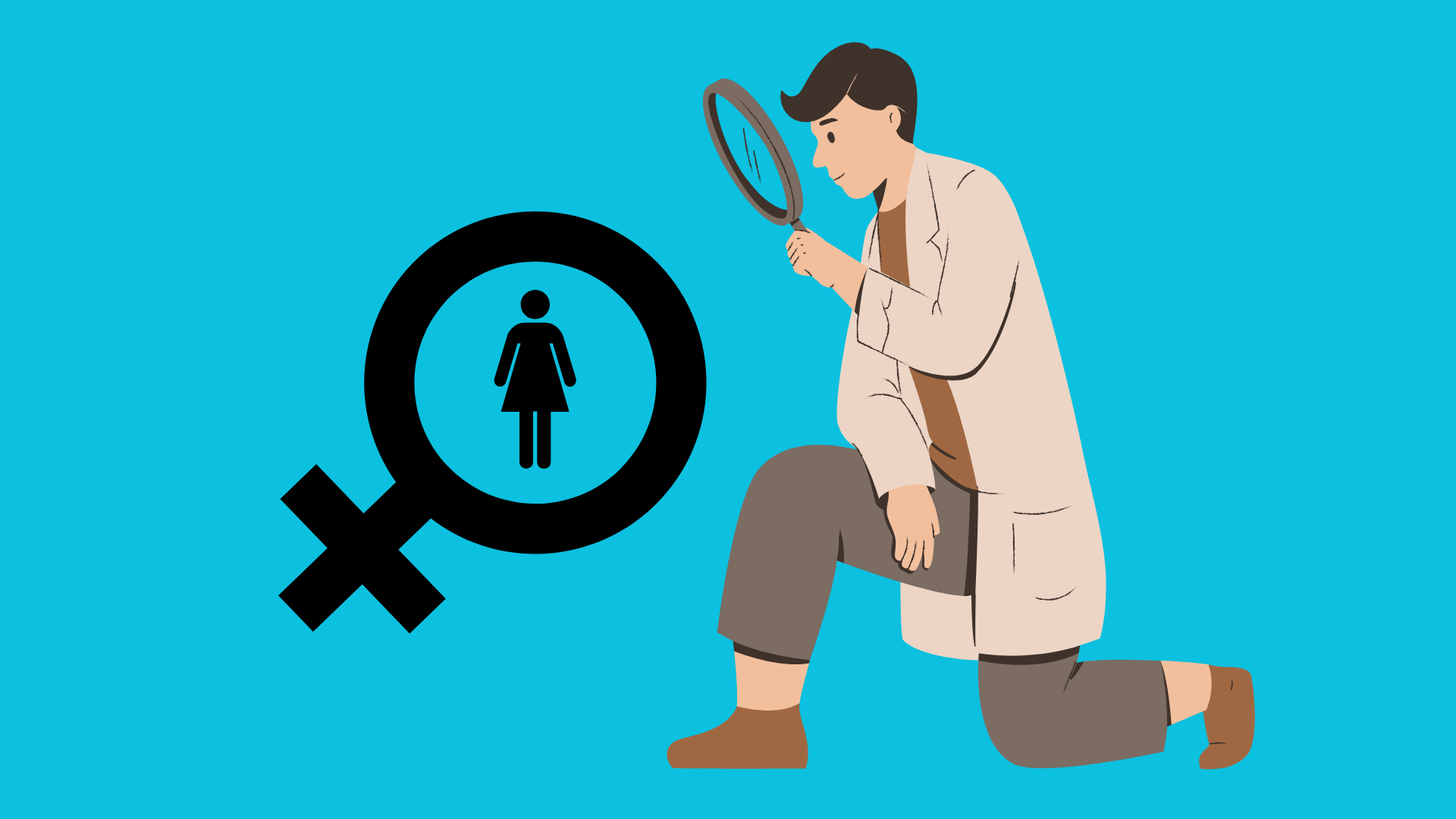For decades, medical research has operated under a flawed assumption: that the male body represents the human norm. This bias has permeated every level of biomedical science — from laboratory cell lines to animal studies to clinical trials — creating a healthcare system where women are systematically undertreated, misdiagnosed, and exposed to preventable harm. This scientific bias both reflects and reinforces real-world gender disparities in healthcare responsibility. Just as research into male reproductive aging has been historically neglected — with fertility concerns disproportionately placed on women despite mounting evidence of age-related declines in sperm quality — the broader pattern of male-centric research has created a vicious cycle where women bear both the burden of health vigilance and the consequences of inadequate medical knowledge about their bodies.
The Scope of the Problem
The numbers tell a troubling story. A comprehensive analysis of over 1,400 high-impact clinical research manuscripts published between 2015 and 2019, encompassing nearly 5 million subjects, revealed that men continue to be overrepresented in clinical research, comprising 56% of participants compared to 44% women. Perhaps more alarmingly, less than a quarter of these studies achieved sex matching — equal inclusion of male and female participants — with industry-funded studies showing particularly pronounced bias toward male participation.
This pattern extends across disease categories and research types. A 2024 study examining prospective follow-up observational studies found that women remain significantly underrepresented across many disease categories, with especially severe underrepresentation in HIV/AIDS and cardiovascular research. Investigative reporting has revealed that women, particularly cisgender women, were excluded from major HIV prevention drug trials — with researchers citing pregnancy risks and hormonal variation as complicating factors — resulting in women having less safety and efficacy data for life-saving drugs like PrEP and creating real-world inequities in HIV prevention access. The historical record is even more stark: research has documented that women have comprised only approximately 42% of trial participants, and few studies have reported results disaggregated by sex, making it impossible to identify gender-specific treatment responses.
The Metabolic Mismatch
The consequences of this male-centric approach become particularly evident when examining fundamental physiological differences. Research demonstrates that women consistently have a lower resting metabolic rate than men, even after adjusting for body composition and fitness levels. Studies show that men have roughly 27% greater daily energy expenditure than women, yet drug dosages are routinely standardized based on average male bodies.
Adding complexity to this picture, research has shown that women generally have higher activity of the enzyme CYP3A4, which is responsible for metabolizing many commonly prescribed drugs. While this means some drugs clear faster in women, others — depending on interaction with transport proteins — linger longer, altering both efficacy and toxicity. These sex differences are not uniform but biologically predictable, reinforcing the need for tailored dosing rather than a "one-size-fits-all" male default.
This metabolic mismatch has direct clinical implications. Painkiller dosages and other pharmaceutical prescriptions frequently fail to account for sex-based differences in energy demands, metabolism, and pharmacodynamics. The result is suboptimal treatment efficacy for women and, more dangerously, a significantly higher risk of adverse drug reactions. In some cases, medications have had to be withdrawn from the market due to their disproportionately negative effects on women — effects that went undetected because the drugs were inadequately tested on female subjects despite being prescribed equally to both sexes.
The Ambien Wake-Up Call
Perhaps no case illustrates the dangers of male-default medicine more clearly than zolpidem (Ambien), a widely prescribed sleep aid. Research revealed that women metabolize the drug significantly slower than men, yet clinical trials did not initially account for this difference. The consequences were serious: women experienced next-day drowsiness and impaired driving at substantially higher rates than men.
Only in 2013 — two decades after the drug's approval — did the FDA mandate sex-specific prescribing guidelines, lowering the recommended starting dose for women from 10mg to 5mg. The agency acknowledged that female patients were at higher risk of residual drug levels in the morning. This rare regulatory correction illustrated both the risks of assuming men's pharmacokinetics apply universally and the inadequacy of a system that requires women to experience harm before corrections are made. The decision underscored how failing to integrate sex-based pharmacology into early research can directly endanger patients and force costly retroactive interventions.
From Lab to Prescription: A System-Wide Failure
The gender bias problem begins long before human clinical trials. A landmark review by Beery and Zucker revealed that biomedical research has systematically favored male subjects in both animal studies and clinical research, with male rodents used in far higher numbers than females. This bias stemmed from assumptions that female hormonal cycles would "complicate" data, leading to a long-standing neglect of female physiology. As a result, findings generalized from male-only models have shaped medical knowledge, leaving critical sex differences understudied. Recent reporting from 2024 shows this pattern persists even in aging research, where labs overwhelmingly use male animals, sidelining sex-specific differences in aging processes — particularly relevant given that women live longer and experience unique aging trajectories including menopause-linked changes.
Nearly every step of the drug development pathway exhibits this bias, from initial cell-line experiments through animal models to final clinical testing. Despite regulatory changes, women continue to be underrepresented even in Phase I clinical trials, where drugs are tested for basic safety and dosage. Companies often exclude women of childbearing age to avoid liability, creating early-stage data skewed toward male metabolism — a bias that affects subsequent dosage recommendations and can lead to unforeseen adverse effects in women during later trial phases or after approval.
Most biomedical studies — particularly in neurology, physiology, and pharmacology — remain heavily male-biased in their methodologies and reporting practices. These male-centric findings are then used to create clinical guidelines that are erroneously applied to women, often with detrimental consequences.
A systematic review examining sex inequalities in medical research found that while reporting and analyzing results by sex is improving, only 38.1% of studies reported data disaggregated by sex. Even fewer — just 22.9% — discussed the implications of sex-based differences in their findings. This represents a fundamental failure in translating research into equitable healthcare: even when women are included in studies, their distinct biological responses are frequently ignored in the analysis and application of results.
The Yentl Syndrome: When Symptoms Don't Match the Textbook
Nowhere is the male-default approach more deadly than in cardiology. Women's heart disease symptoms often differ from the "classic" chest pain presentation seen in men, yet clinical guidelines have historically prioritized the male pattern. This mismatch, known as the Yentl syndrome, has led to women being misdiagnosed, undertreated, or dismissed entirely, with measurably worse survival rates as a result.
The case reveals a fundamental problem: when diagnostic tools, clinical training, and treatment protocols are all shaped around men's bodies, women with identical conditions face systematically worse outcomes. A 2025 analysis of UK clinical trials found a "concerning" lack of female-only studies, despite mounting evidence that women respond differently to many drugs. Regulators warned that this persistent male-centered design in medical science risks perpetuating poorer outcomes for women — underscoring that even after decades of awareness, systemic reform in trial requirements remains urgently needed.
The Historical Context and Policy Response
The recognition of these disparities has prompted significant policy interventions, though implementation remains inconsistent. The roots of women's exclusion in trials trace back to the mid-20th century, when concerns about pregnancy and fetal harm after tragedies like thalidomide led regulators to bar women of childbearing age from early-phase studies. Though protective in intent, this effectively sidelined women from medical knowledge production for decades.
The landmark NIH Revitalization Act of 1993 represented a major turning point, mandating that women and minorities must be included as subjects in all NIH-funded clinical research unless strong justification is provided for their exclusion. The Act also required that analyses of sex differences must be possible in trial data.
This legislation emerged from advocacy efforts and early research in the late 1980s and early 1990s that uncovered severe underrepresentation of women in heart disease and drug trials. However, as subsequent research has shown, the 1993 Act alone was insufficient to eliminate gender bias in research. The NIH Office of Research on Women's Health outlines how policy gradually shifted: from near-total exclusion in the 1970s and '80s, to the 1993 Revitalization Act, to recent pushes for sex-disaggregated analysis in research data. While representation has improved, enforcement remains uneven, and many studies still fail to analyze outcomes by sex.
In response to continued evidence of male predominance in basic and preclinical research, the NIH implemented its Policy on Sex as a Biological Variable (SABV) in 2016. This policy requires all applications for NIH funding to account for sex as a biological variable in both vertebrate animal and human studies, representing an evolution from simple inclusion requirements to more comprehensive expectations around research design, analysis, and reporting.
These policy interventions were driven by a wave of review articles and analyses published between 2013 and 2015 that documented ongoing sex bias in both animal and human research, providing crucial evidence for expanded regulatory action.
The Author Angle: A Glimmer of Hope
Interestingly, research has identified one factor associated with improved female representation: studies with female corresponding authors showed higher rates of female inclusion. This finding suggests that diversifying the scientific workforce itself may be an important lever for addressing research bias — women scientists may be more likely to recognize the importance of including female subjects and analyzing sex-based differences in outcomes.
The Path Forward
Researcher and author Cat Bohannon, in her work Eve: How the Female Body Drove 200 Million Years of Human Evolution, has elaborated extensively on how science has systematically overlooked women's biology, from evolutionary studies to contemporary health technologies. She argues that science and medicine have long constructed narratives that erase or minimize the female body, tracing this bias across evolutionary history and biomedical research to show how "male default" thinking has warped both cultural stories and clinical practice. Bohannon insists that recognizing female biology not as an exception but as central to human evolution and health is key to correcting these blind spots.
The evidence is clear: assuming the male body as the norm in scientific research leads to treatment gaps, higher rates of adverse drug reactions in women, and systemic failures to optimize healthcare for half the population. While policy changes have established important frameworks for sex inclusion and analysis, the persistence of male overrepresentation in contemporary research — decades after initial reforms — demonstrates that cultural and structural changes in scientific practice are still urgently needed.
The cost of gender bias in medical research is measured not just in statistics but in women's lives: in preventable adverse drug reactions, in treatments that work less effectively, in diseases diagnosed later or missed entirely. Addressing this bias requires sustained commitment from researchers, funding agencies, pharmaceutical companies, and regulatory bodies to ensure that medical science truly serves all patients, not just those who happen to match the historically dominant research subject: the male body.








